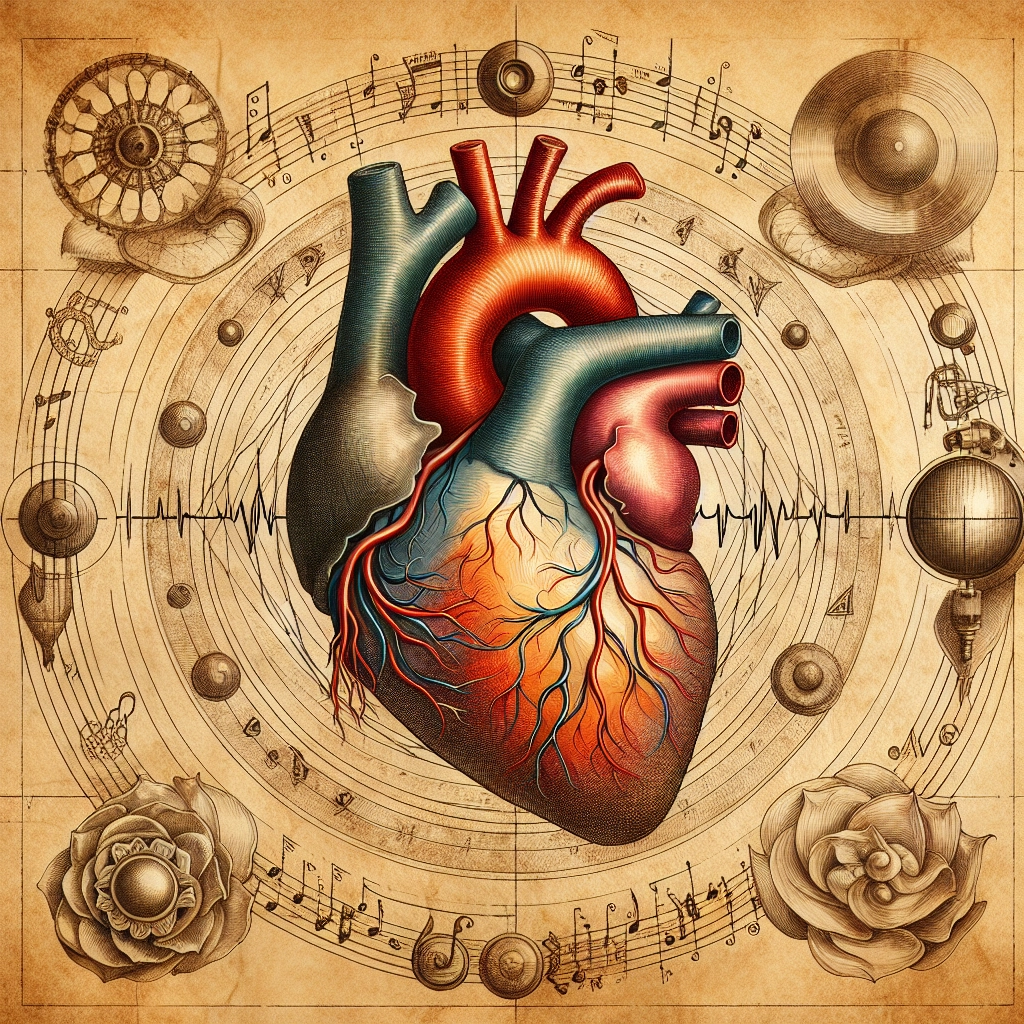
- Published on
- Authors

- Name
- ric de yuga 😄
❤️ Heartbeat Harmony: How Does a Pacemaker Regulate the Heart? ❤️
Pacemakers are life-saving devices that help regulate heart rhythms in people with heart conditions. These small, electronic devices ensure that the heart beats at a normal rate and rhythm, providing a crucial intervention for those with irregular heartbeats or arrhythmias. But how does a pacemaker regulate the heart? Let's explore the technology, components, and functions of pacemakers to understand their vital role in cardiac health.
🔬 The Science of Pacemakers 🔬
A pacemaker is designed to monitor and regulate the heart's electrical activity. It consists of a small pulse generator and one or more leads (electrodes) that deliver electrical impulses to the heart muscle.
🧠 How Pacemakers Work 🧠
⚡ Components of a Pacemaker:
- Pulse Generator: The pulse generator is a small, battery-powered device that generates electrical impulses. It contains a microprocessor that monitors the heart's electrical activity and determines when to send impulses.
- Leads (Electrodes): Leads are thin, insulated wires that carry the electrical impulses from the pulse generator to the heart. They are inserted into the heart's chambers and anchored in place.
- Battery: The pacemaker's battery powers the pulse generator. Modern pacemaker batteries can last for several years before needing replacement.
🩺 Function of a Pacemaker:
- Monitoring Heart Activity: The pacemaker continuously monitors the heart's electrical activity. It detects any irregularities in the heart's rhythm, such as bradycardia (slow heart rate) or arrhythmias (irregular heartbeats).
- Delivering Electrical Impulses: When the pacemaker detects an abnormal heart rhythm, it sends small electrical impulses through the leads to the heart muscle. These impulses stimulate the heart to contract and maintain a regular heartbeat.
- Adjusting to Activity Levels: Some modern pacemakers are rate-responsive, meaning they can adjust the heart rate based on the patient's physical activity. They use sensors to detect changes in body movement or breathing and increase or decrease the heart rate accordingly.
🌍 The Importance of Pacemakers 🌍
Pacemakers play a crucial role in managing various heart conditions and improving the quality of life for many patients.
💓 Conditions Treated by Pacemakers:
- Bradycardia: A slow heart rate that can cause dizziness, fatigue, and fainting.
- Heart Block: A condition where the electrical signals in the heart are partially or completely blocked, causing an irregular heartbeat.
- Arrhythmias: Irregular heartbeats that can lead to complications such as stroke or heart failure.
🩺 Benefits of Pacemakers:
- Improved Heart Function: By maintaining a regular heart rhythm, pacemakers help ensure that the heart pumps blood effectively, improving overall circulation and oxygen delivery to the body.
- Symptom Relief: Pacemakers can alleviate symptoms such as dizziness, fatigue, and shortness of breath, allowing patients to lead more active and comfortable lives.
- Increased Longevity: For many patients with severe arrhythmias or heart block, pacemakers can significantly extend life expectancy by preventing life-threatening complications.
🌟 Advances in Pacemaker Technology 🌟
Modern pacemakers have evolved significantly, offering advanced features and improved functionality.
📡 Wireless Connectivity:
- Remote Monitoring: Some pacemakers can transmit data wirelessly to healthcare providers, allowing for remote monitoring and timely adjustments to the device settings.
🦠 MRI Compatibility:
- Safe Imaging: MRI-compatible pacemakers allow patients to undergo magnetic resonance imaging (MRI) scans safely, providing better diagnostic options without risking interference with the pacemaker.
⚙️ Leadless Pacemakers:
- Minimally Invasive: Newer leadless pacemakers are small, self-contained devices that are implanted directly into the heart, eliminating the need for leads and reducing the risk of complications.
🛡️ Pacemaker Security: Preventing Unauthorized Access 🛡️
While pacemakers provide critical health benefits, they also come with potential security risks that need to be addressed to ensure patient safety.
🔒 The Risk of Cyber Attacks:
- Vulnerabilities: As pacemakers become more advanced and connected, they can be vulnerable to cyber attacks. Hackers could potentially interfere with the device's operation, posing serious health risks to patients.
- Unauthorized Access: Unauthorized access to a pacemaker's settings could allow attackers to alter the device's functionality, leading to potentially dangerous changes in heart rhythm management.
🛡️ Enhancing Pacemaker Security:
- Unique Authentication: Implementing security measures such as unique keys or fingerprint authentication can help prevent unauthorized access to pacemakers. Each pacemaker could be programmed to recognize only the patient's biometric data or a secure digital key.
- Encryption: Using strong encryption protocols for data transmission between the pacemaker and external monitoring devices can protect against interception and tampering.
- Regular Updates: Ensuring that pacemakers receive regular software updates can help address security vulnerabilities and enhance the overall safety of the device.
🌟 The Lifesaving Role of Pacemakers 🌟
Pacemakers are a testament to the incredible advancements in medical technology. They provide a lifeline for patients with heart rhythm disorders, ensuring that their hearts beat regularly and efficiently. By incorporating robust security measures, we can further safeguard these vital devices against potential threats.
Next time you hear about a pacemaker, you'll understand the sophisticated technology, critical functions, and security considerations that make these devices so essential for cardiac health. Let's celebrate the marvels of pacemaker technology and the lifesaving benefits they offer to millions of people around the world.
